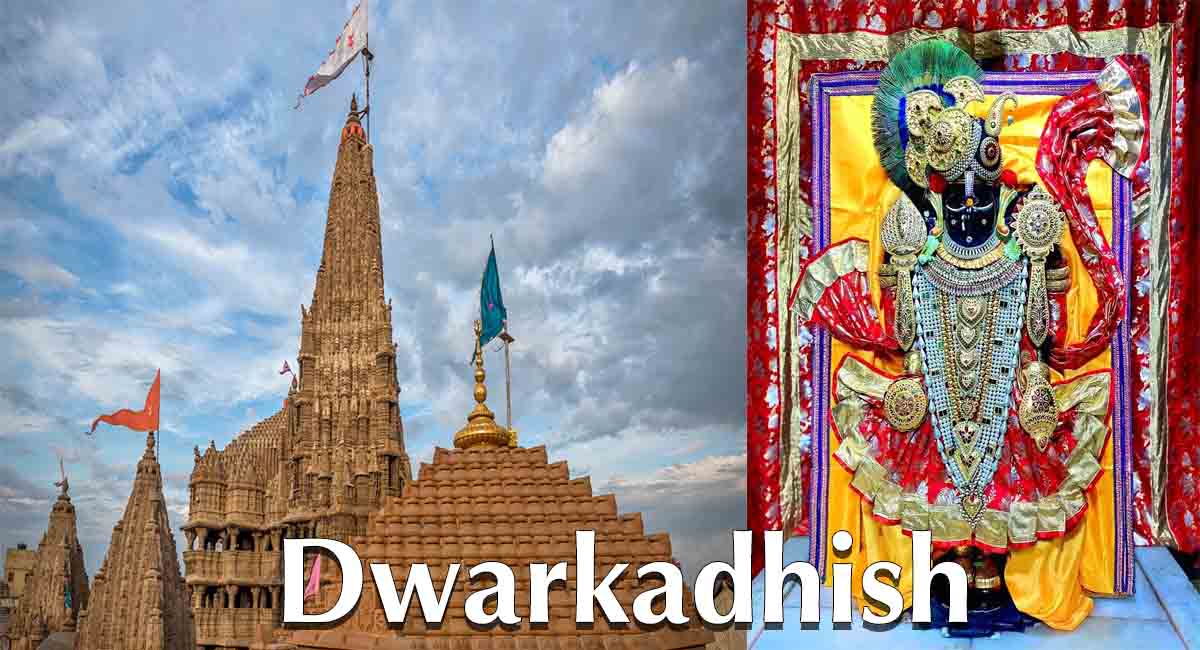Dwarkadhish Temple is one of the most famous temples in India and is located in the city of Dwarka, Gujarat. This temple is dedicated to Lord Krishna, one of the most revered Hindu deities. The temple is not just a place of worship but also a significant landmark that attracts thousands of devotees every year.
Dwarkadhish Temple Overview
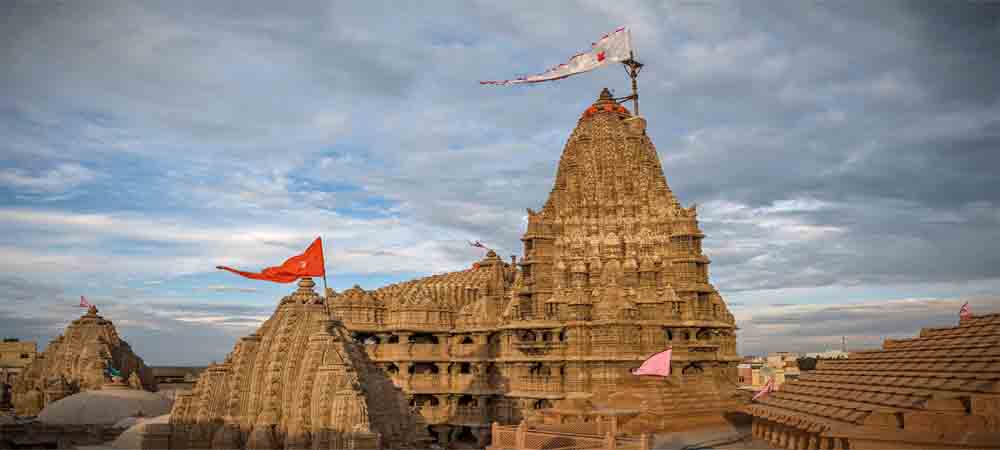
The Dwarkadhish Temple, also known as the Jagat Mandir, is a magnificent Chalukya-style architecture dedicated to Lord Krishna. It is located in the town of Dwarka, which has a rich history dating back to the Kingdom of Dwaraka in the Mahabharata.
The five-story main shrine is grand and marvelous, constructed of limestone and sand. This 2200-year-old architecture is believed to have been built by Vajranabha, who reclaimed the land from the sea with the help of Lord Krishna.
The temple features intricate sculptural detailing done by the ancestral dynasties that once ruled the region, as well as a black magnificent idol of Lord Krishna. Additionally, there are other shrines within the temple dedicated to Subhadra, Balarama and Revathy, Vasudeva, Rukmini, and many others.
Before entering the temple through the Swarg Dwar, devotees are expected to take a dip in the Gomti River. The eve of Janmashtami is the most special occasion in any Krishna temple, and at the Dwarkadhish temple, thousands of devotees chant prayers and perform rituals. The shrine becomes a hive of colors, voices, and faith, transforming into a place of inner silence and sanctity.
Dwarkadhish Temple Timings
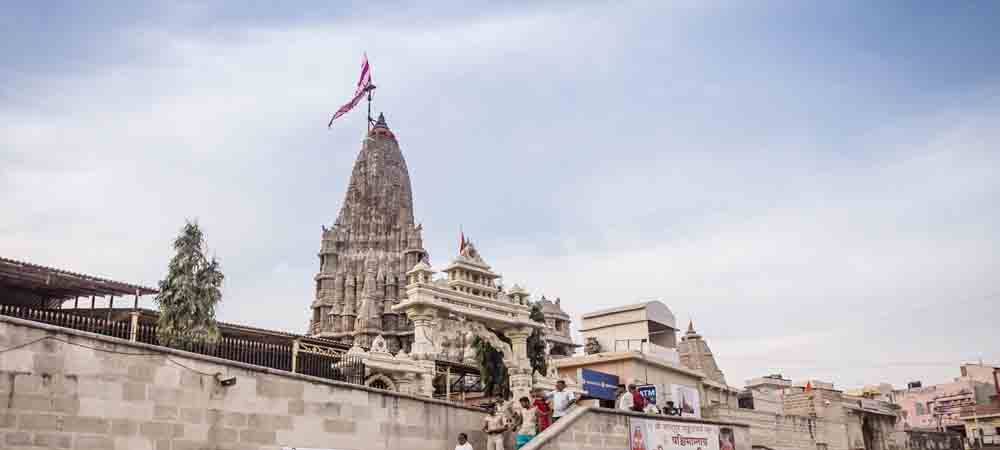
The Dwarkadhish Temple is open to visitors every day of the week, from early morning until late evening. The temple opens at 6:30 AM and closes at 1:00 PM, after which it reopens at 5:00 PM and remains open until 9:30 PM. These timings may vary on special occasions and during festivals, so it’s always a good idea to check beforehand.
Dwarkadhish Temple Puja
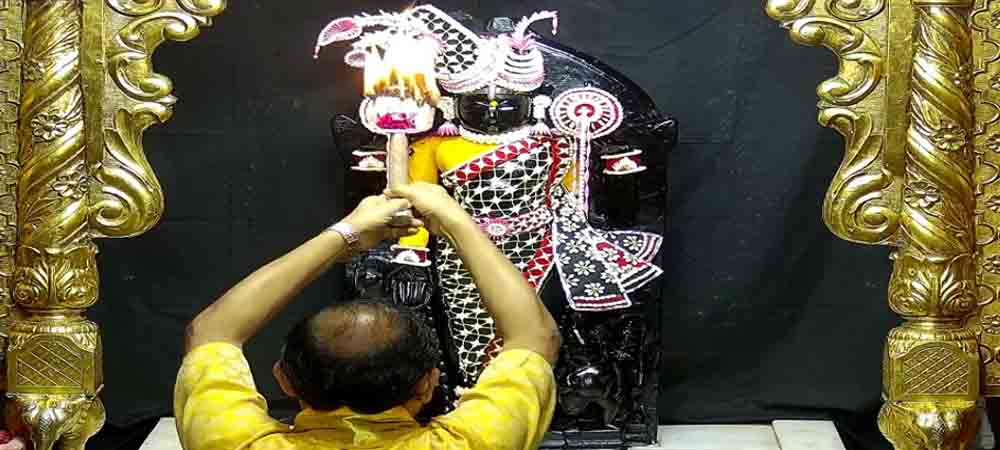
The Dwarkadhish Temple in Gujarat offers various pujas and rituals to devotees. Some of the most popular ones include the Mangla Aarti, which takes place in the early morning, the Sandhya Aarti, which is performed in the evening, and the Shringar Aarti, which is conducted in the afternoon.
Other important pujas that take place at the temple include Abhishekam, which involves pouring milk and other offerings over the idol of Lord Krishna, and the Bhog Aarti, where food offerings are made to the deity.
Devotees can also request for special pujas and offerings to be performed on their behalf, such as the Tulsi Puja, which involves worshiping the holy basil plant, and the Naivedyam Puja, which involves offering food to Lord Krishna.
It’s important to note that these pujas and rituals may have specific timings and may require prior booking or permission from the temple authorities. It’s always a good idea to check with the temple beforehand to avoid any inconvenience.
History of Dwarkadhish Temple
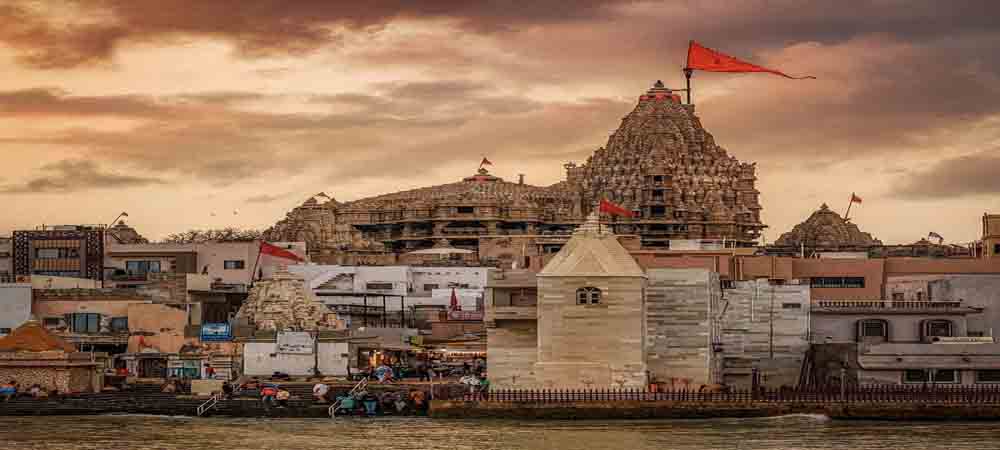
The history of the Dwarkadhish Temple is an exciting tale. According to tradition, it is believed to have been constructed by Lord Krishna’s grandson, Vajranabha, over the Hari-Griha. This is why the temple is referred to as the Dwarkadhish Temple, meaning the Lord of Dwarka is worshipped here. It is one of the Char Dham pilgrimage sites for Hindus, along with Rameshwaram, Badrinath, and Puri. Adishakaracharya, an 8th-century theologian and philosopher, visited the temple and established the Sharda Peeth here.
The Dwarkadhish Temple is the 108th Divya Desam of Shri Vishnu, as described in the Divya Prabhanda texts.
The temple’s architecture is primarily Chalukya-style, with intricate sculptural detailing that showcases the skill and artistry of the ancestral dynasties of the region. Over the centuries, the temple has undergone numerous renovations and additions, with various dynasties and rulers contributing to its growth and grandeur.
Today, the Dwarkadhish Temple is a significant pilgrimage site for Hindus and attracts thousands of devotees each year. It’s the rich history and spiritual significance makes it a symbol of India’s cultural heritage and religious diversity.
Legends of Dwarkadhish Temple
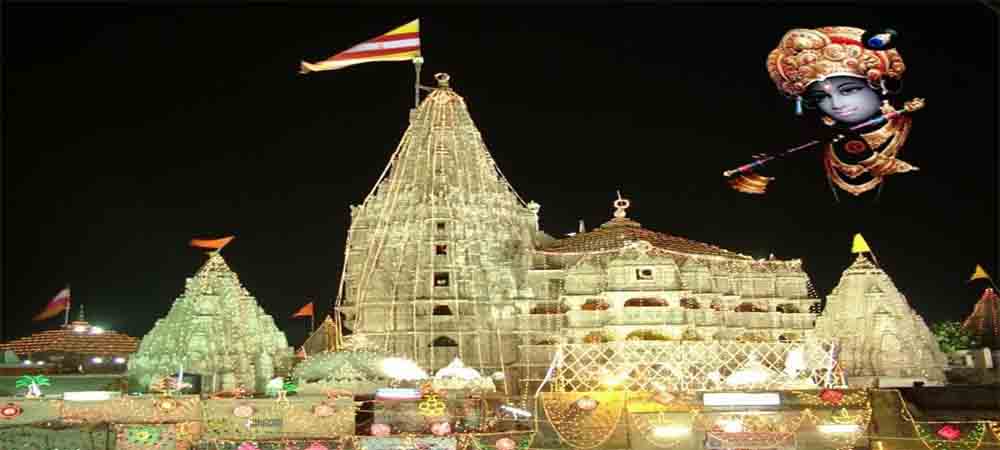
The Dwarkadhish Temple is steeped in legends and myths, which have been passed down through generations.
One such legend is the story of the idol of Lord Dwarkadhish. According to the tale, a devoted worshipper of Lord Dwarkadhish named Badana would visit the temple every day from Dakor. Lord Dwarkadhish, pleased by her devotion, decided to accompany her back to Dakor. The priest at the temple was outraged and chased after them to retrieve the idol. However, Badana convinced the priests to take gold in exchange for the idol. To everyone’s surprise, the idol weighed only a nose ring, which was all that Badana had to offer. Lord Dwarkadhish then prophesied that a replica of the idol would be found one day, and a yet-to-grow idol is now enshrined in the temple.
Another legend is that of Rukmini’s shrine. It is believed that Dwarka was built by Lord Krishna on a piece of land reclaimed from the sea. Once, when the sage Durvasa visited Krishna and his wife Rukmini, he expressed his desire to visit their palace. On their way to the palace, Rukmini grew tired and asked for some water. Krishna then dug a mythical hole, and the river Ganga flowed into it, providing water for Rukmini. Furious at this act, Sage Durvasa cursed Rukmini to remain where she stood. Today, her shrine is a significant part of the Dwarkadhish Temple.
The Architecture of Dwarkadhish Temple
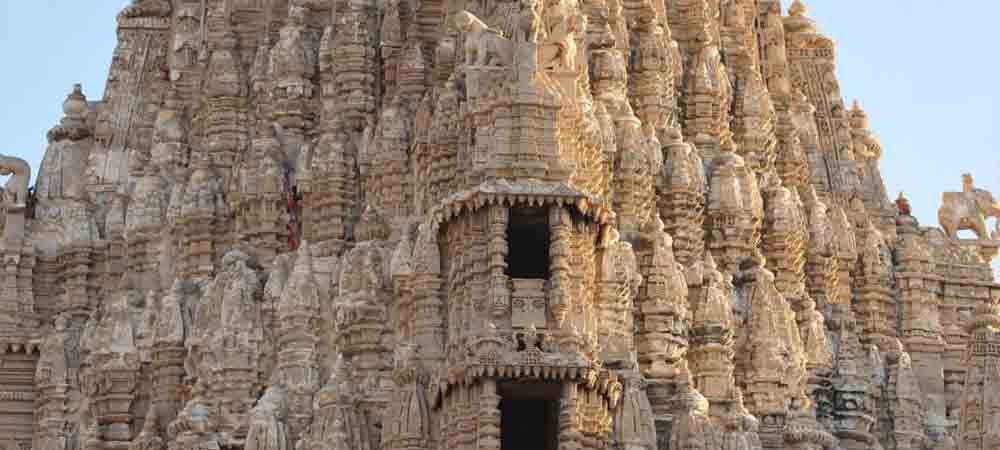
The Dwarkadhish Temple, located on the banks of the Gomti River, is a stunning architectural wonder that has attracted visitors from all over the world. This article will explore the temple’s design, architecture, and unique features that make it stand out.
Majestic Five-Storey Tower and Intricately Carved Spire
The temple’s majestic five-story tower, supported by 72 pillars, is a sight to behold. The intricately carved spire, which is 78.3m high, adds to the grandeur of the temple. At the top of the spire, there is an exquisitely carved Shikhar that soars 42m high with a flag made of 52 yards of cloth. The flag consists of sun and moon symbols, personifying Lord Krishna’s reign over the temple, as long as the sun and moon exist.
Gateways and Sanctum
The temple is enriched by the two gateways Swarg Dwar (where pilgrims enter) and Moksha Dwar (where pilgrims exit). It comprises of a vestibule, sanctum, and a rectangular hall with porches on either side. The black magnificent idol of Lord Krishna is the central attraction of the temple.
Influences from Regional Styles
The architecture of the Dwarkadhish Temple is primarily Chalukya style, with influences from other regional styles such as Rajput, Mughal, and Jain. The temple is constructed mainly from limestone and sand, with intricate sculptural detailing done by the ancestral dynasties that ruled the region.
Other Shrines and Unique Features
The temple complex also contains other shrines devoted to various deities, including Subhadra, Balarama and Revathy, Vasudeva, Rukmini, and many others. One of the unique features of the temple is its location on the banks of the Gomti River. Devotees are expected to take a dip in the river before proceeding into the temple through the Swarg Dwar. The temple’s design incorporates many courtyards, halls, and rooms, which are arranged in a way that maximizes natural light and ventilation.
Renovations and Additions
Over the centuries, the temple has undergone many renovations and additions, with various dynasties and rulers contributing to its growth and grandeur. Despite these changes, the temple has retained its distinctive architectural style and continues to be a marvel of ancient Indian architecture.
Dwarkadhish Temple Festivals
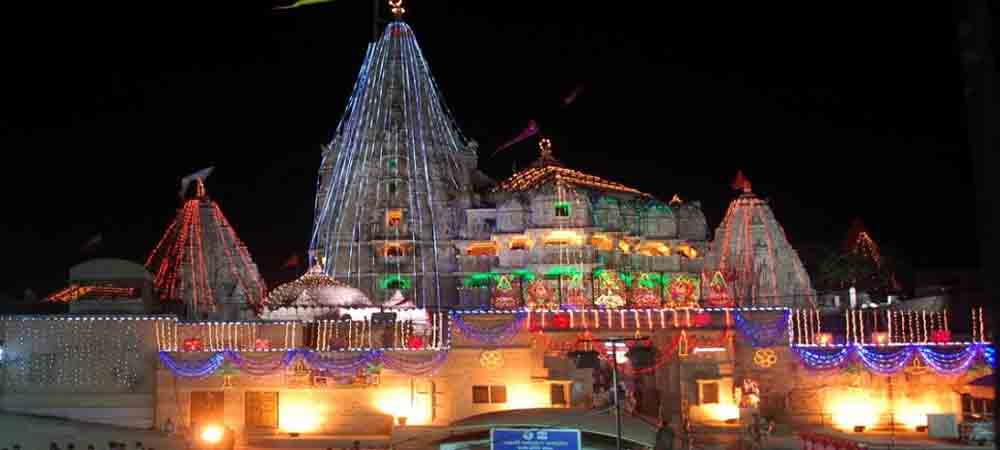
Dwarkadhish Temple is known for its grand festivals and celebrations throughout the year. Some of the most popular festivals celebrated in the temple include:
Janmashtami: This festival, which falls in August or September, celebrates the birth of Lord Krishna. It is one of the most important festivals celebrated in the temple and attracts thousands of devotees from all over India.
Holi: Also known as the “Festival of Colors”, Holi is celebrated in March or April and marks the victory of good over evil. It is a joyous festival, with people smearing each other with colors and dancing to traditional music.
Diwali: Celebrated in October or November, Diwali is the “Festival of Lights” and is one of the most important festivals in India. It symbolizes the victory of light over darkness and is celebrated with fireworks, lamps, and sweets.
Sharad Purnima: This festival, which falls in October, is dedicated to Goddess Lakshmi, the Hindu goddess of wealth and prosperity. Devotees fast during the day and offer special prayers at night.
Navratri: This nine-day festival, which falls in September or October, celebrates the victory of Goddess Durga over the demon Mahishasura. The festival is celebrated with fasting, prayer, and the performance of traditional dance forms such as Garba and Dandiya.
During these festivals, the temple is beautifully decorated, and special pujas and rituals are performed. Devotees flock to the temple to offer prayers, seek blessings, and participate in the festivities.
Best Time to Visit Dwarkadhish Temple
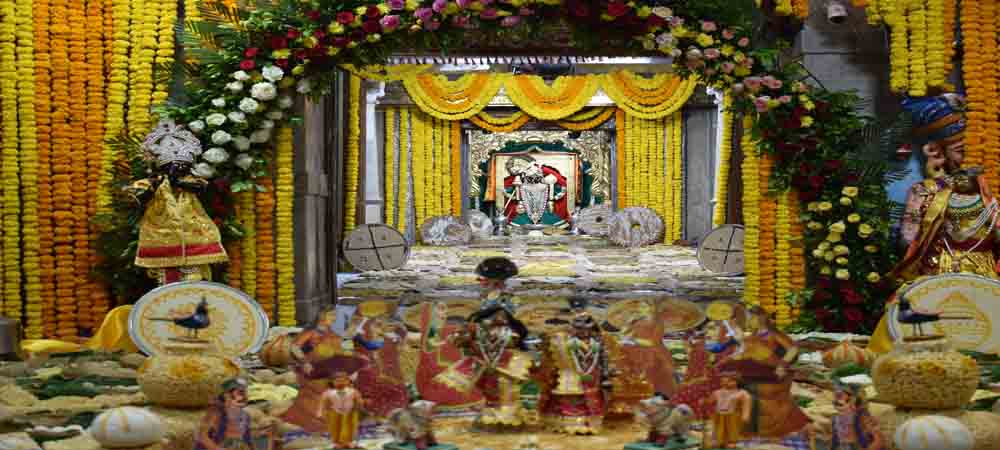
The Dwarkadhish Temple, located at the mouth of the Gomti River in Gujarat, is a significant pilgrimage site that attracts numerous visitors throughout the year. With its origins dating back more than 2500 years, this temple is steeped in history and culture.
If you are planning to visit the temple, the best time to do so is during the winter season, which lasts from November to February. The weather during this time is comfortably cool, with clear blue skies providing an ideal backdrop for exploring the temple and its surroundings.
Another good time to visit the temple is during the monsoon season, which falls between June and September. During this time, the rains rejuvenate the lush greenery of the region, making it a breathtaking sight to behold.
On the other hand, it’s best to avoid visiting the temple during the summer season, which lasts from March to June. The weather can be hot and humid, which can make it uncomfortable for visitors. If you must visit during this time, make sure to carry protective gear like sunscreen, hats, and sunglasses to keep yourself safe from the harsh sun.
It’s also important to keep in mind that the temple can get crowded during festive occasions like Janmashtami, Holi, and Diwali. Therefore, it’s advisable to plan your visit accordingly if you prefer to avoid crowds.
Accommodation and Facilities at Dwarkadhish Temple
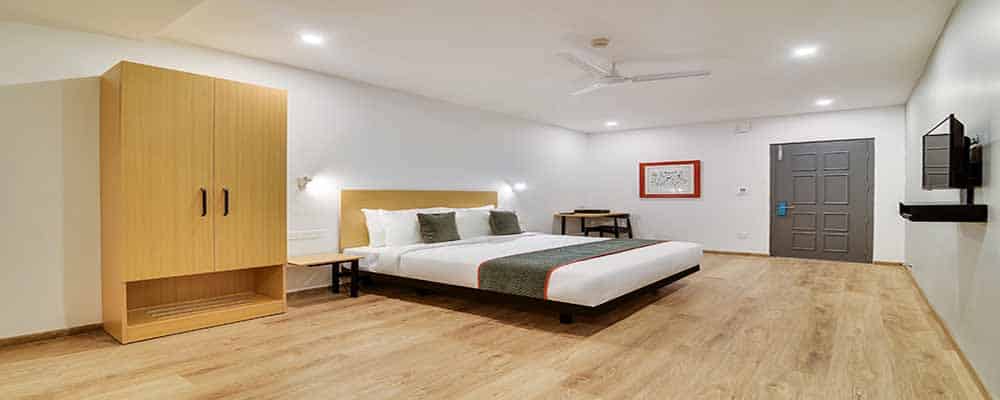
Dwarkadhish Temple is a popular tourist destination, and there are plenty of accommodation options available near the temple. There are many hotels and lodges that cater to the needs of visitors. These hotels offer various types of rooms, including standard, deluxe, and luxury rooms. The rooms are equipped with all the basic amenities such as air conditioning, television, and Wi-Fi.
Apart from accommodation, the temple also offers various facilities to its visitors. The temple has a cloakroom where visitors can deposit their shoes and belongings. The temple also has a parking facility for those who come to the temple by car. The temple has a prasad counter where visitors can buy prasad, which is considered a sacred offering.
Visitors can also take a tour of the temple’s premises, which includes the temple museum. The museum has a collection of artifacts, sculptures, and paintings that depict the life and teachings of Lord Krishna. The temple also has a community kitchen where visitors can have a meal.
Overall, Dwarkadhish Temple is a well-maintained temple with all the necessary facilities and amenities. Visitors can have a comfortable and peaceful experience while visiting the temple.
How To Reach Dwarkadhish Temple
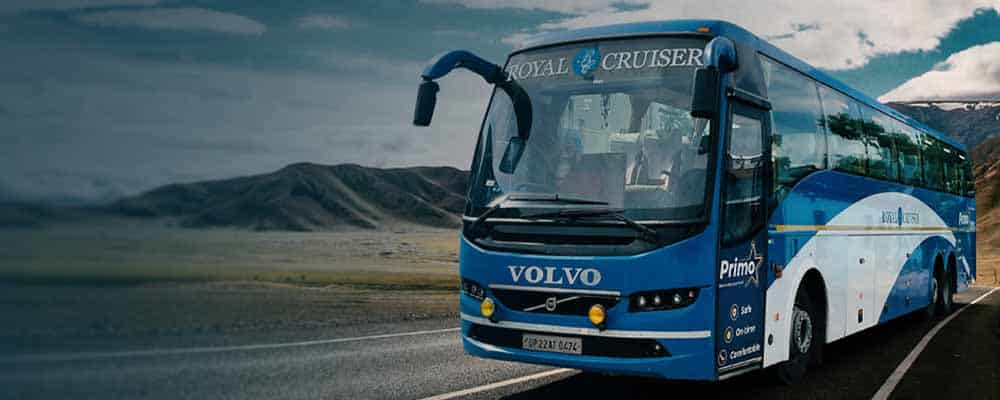
Dwarkadhish Temple, located in the state of Gujarat, is easily accessible by all modes of transportation.
By Air: The nearest airport is the Jamnagar Airport, located approximately 137 km from the temple. From there, you can hire a taxi or take a bus to reach the temple.
By Train: The Dwarka railway station is well-connected to major cities like Mumbai, Ahmedabad, and Rajkot. Once you reach the station, you can take a taxi or a bus to the temple.
By Road: The temple is well-connected by road, with frequent bus services from major cities in Gujarat like Ahmedabad, Surat, Vadodara, and Rajkot. Private taxis are also available for hire.
Once you reach Dwarka, you can easily reach the temple by taking a local taxi or an auto-rickshaw. It’s also recommended to explore the town on foot, as the narrow streets and colorful bazaars are best experienced on foot.
Whether you’re traveling by air, train, or road, getting to Dwarkadhish Temple is easy and hassle-free, making it a popular destination for both devotees and tourists.
Dwarkadhish Photos
[ngg src=”galleries” ids=”14″ display=”basic_thumbnail” thumbnail_crop=”0″]Frequently Asked Questions
What is special about Dwarkadhish Temple?
The Dwarkadhish Temple is one of the most revered Hindu temples in India, dedicated to Lord Krishna. It is known for its impressive five-storied structure and towering spire, intricate sculptural detailing, and location on the banks of the Gomti River. The temple’s design also incorporates many courtyards, halls, and rooms, which maximize natural light and ventilation. It is believed that the temple was built more than 2500 years ago and has undergone many renovations and additions over the centuries.
How to go to Dwarkadhish from Delhi?
The easiest way to reach Dwarkadhish from Delhi is by taking a flight to Jamnagar, which is the nearest airport to Dwarka. From there, you can hire a taxi or take a bus to reach Dwarka. Alternatively, you can also take a train from Delhi to Dwarka or nearby cities such as Jamnagar or Ahmedabad.
Which is the best time for Dwarkadhish Temple?
The best time to visit the Dwarkadhish Temple is during the winter season, which falls between November and February. During this time, the weather is pleasant, with cool temperatures and clear skies, making it ideal for exploring the temple and its surroundings. The monsoon season, which falls between June and September, is also a good time to visit, as the rains bring the lush greenery of the region to life.
What is not allowed in Dwarka temple?
There are certain rules and regulations that visitors are expected to follow while visiting the Dwarkadhish Temple. For instance, visitors are not allowed to wear shoes or footwear inside the temple premises. Additionally, cameras and mobile phones are not allowed inside the temple. Visitors are also expected to dress modestly and maintain silence inside the temple premises.
How much time is required to visit Dwarka?
The time required to visit the Dwarkadhish Temple can vary depending on the individual’s interest and time constraints. On average, it takes around 2-3 hours to explore the temple and its surroundings. However, if you are interested in learning about the temple’s history and significance, you may require more time. Additionally, if you plan to attend any of the temple’s festivals or events, you may need to spend more time in the area.

